
Best sky scenes of 2024
Mark your calendars for the best stargazing events for 2024. From planetary pairings to a solar eclipse, from meteors to a possible spectacular comet, and from star clusters to star-forming nebulae … here they are.
Remember, for a precise view from your location, visit the free online planetarium Stellarium. Enter your location and the date of the event to see a replica of the sky where you live.
Available now! 2024 EarthSky lunar calendar. Makes a great New Year’s gift!
January 8 and 9: Venus and friends

On the morning of January 8 and 9, look to the southeast for a crowded celestial scene. On the first morning, the thin crescent moon, full with earthshine, glows next to the bright red star Antares in Scorpius. Also, for skywatchers in the southwestern US, the moon passes in front of – or occults – Antares about an hour before sunrise. For everyone in the U.S., Venus brilliantly shines to their upper left. Then, 30 minutes before sunrise, little Mercury pops above the horizon, appearing to the lower left of Venus.
Later, on the following morning, an even thinner crescent moon floats below unmistakable Venus while Mercury rises a little higher than the morning before and appears next to the moon.
March 22 to 25: Mercury makes a grand appearance
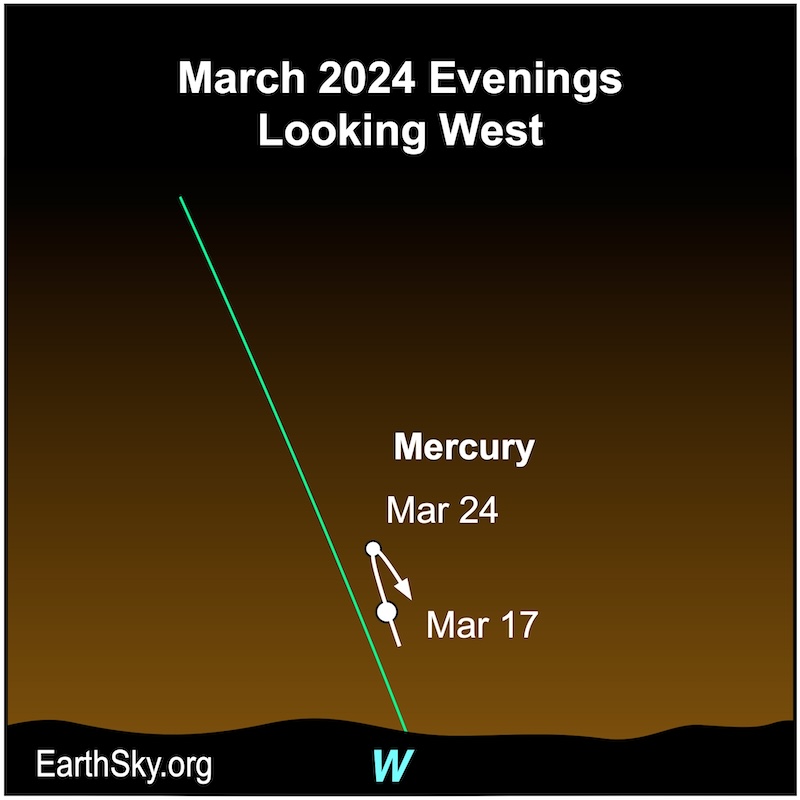
Mercury always lies close to the sun. Consequently, it never appears far above either the morning or evening twilight. From March 17 through March 25, as it nears eastern elongation, the little and sometimes elusive planet shines brightly in the western twilight 40 minutes after sunset. In a clear sky, you should be able to spot it easily.
April 8: A total (and partial) solar eclipse in North America
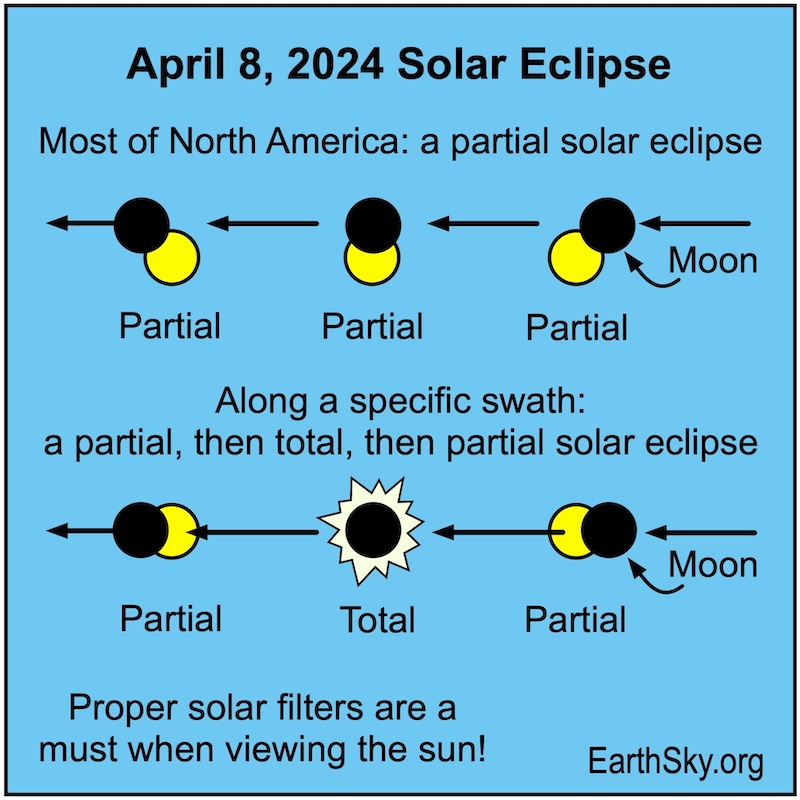
For millions, the biggest event of the year will be the total solar eclipse that will travel along a 115-mile-wide band stretching across North America. On the afternoon of April 8, the moon moves across the disk of the sun. And, if you are in the path of totality, the moon completely covers the sun, revealing a spectacular sight. Observers outside the path will see a partial eclipse, where the moon does not completely cover the sun. To view the partial stages of this event, you must wear proper eclipse glasses. Don’t have any? Order them here before they sell out!

April 10 and 11: Moon, Jupiter and star clusters create a captivating scene
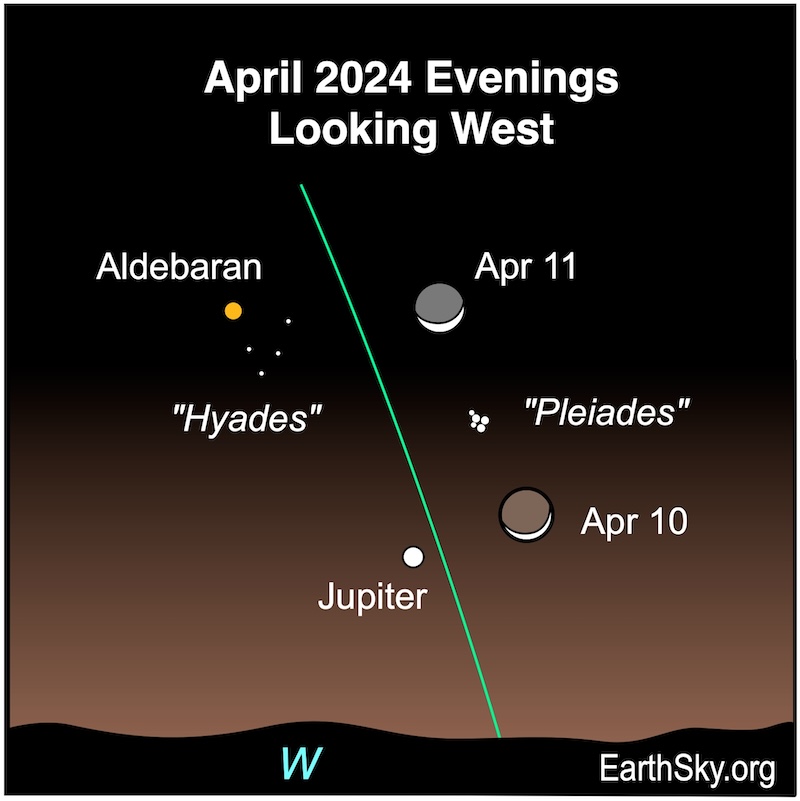
A lovely crescent moon shines near a collection of beautiful objects on the evenings of April 10 and 11. The bright point of light shining nearby is Jupiter. In addition, the dipper-shaped Pleiades star cluster – or Seven Sisters – is a favorite sight among stargazers. And the larger, V-shaped Hyades star cluster with its bright red foreground star, Aldebaran, ranks highly as well. Look west-northwest about an hour after sunset. What a great sight to end your day!
July 7: The crescent moon and Mercury
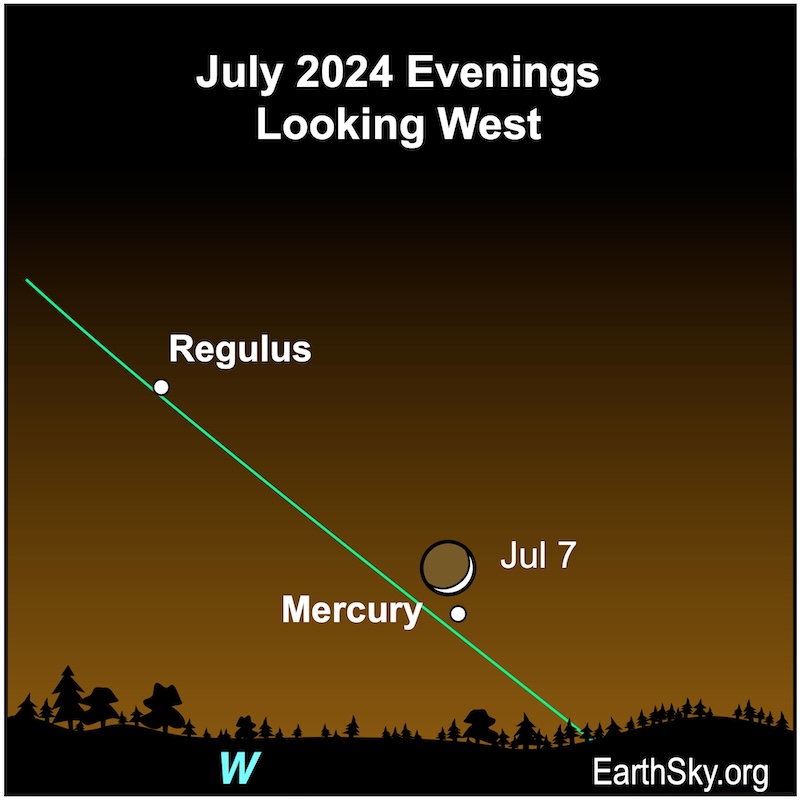
The thin crescent moon – lying low in the bright western-northwestern twilight sky on July 7 – will be a convenient guide for finding little Mercury. Simply look toward the moon about 40 minutes after sunset. The planet will be between the moon and the horizon. Binoculars give a clearer view. Place the moon at the upper edge of the field, and Mercury will be near the field’s center.
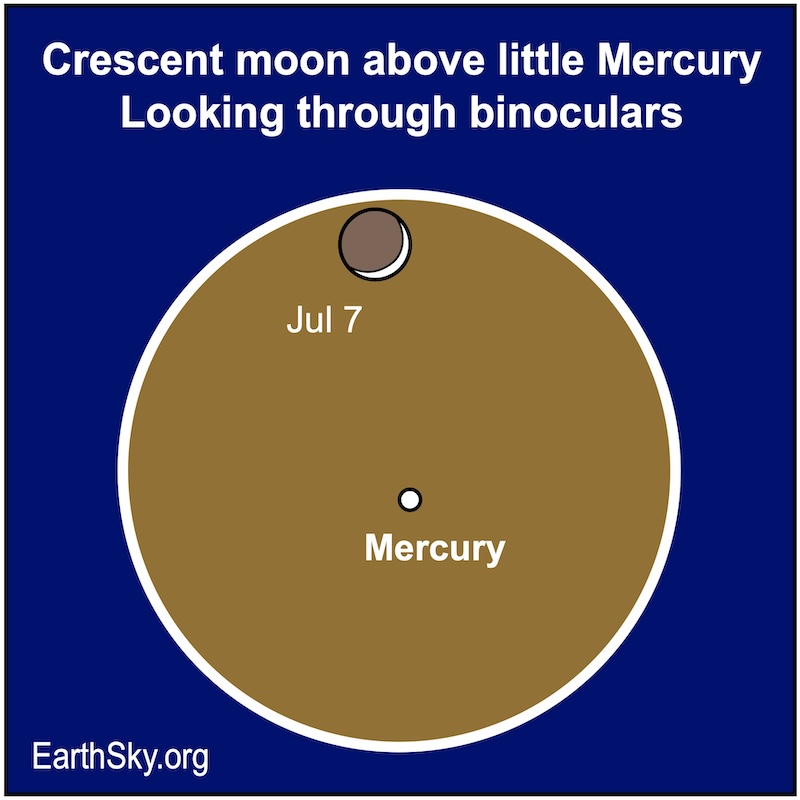
July 30 and 31: The crescent moon, Jupiter and Mars
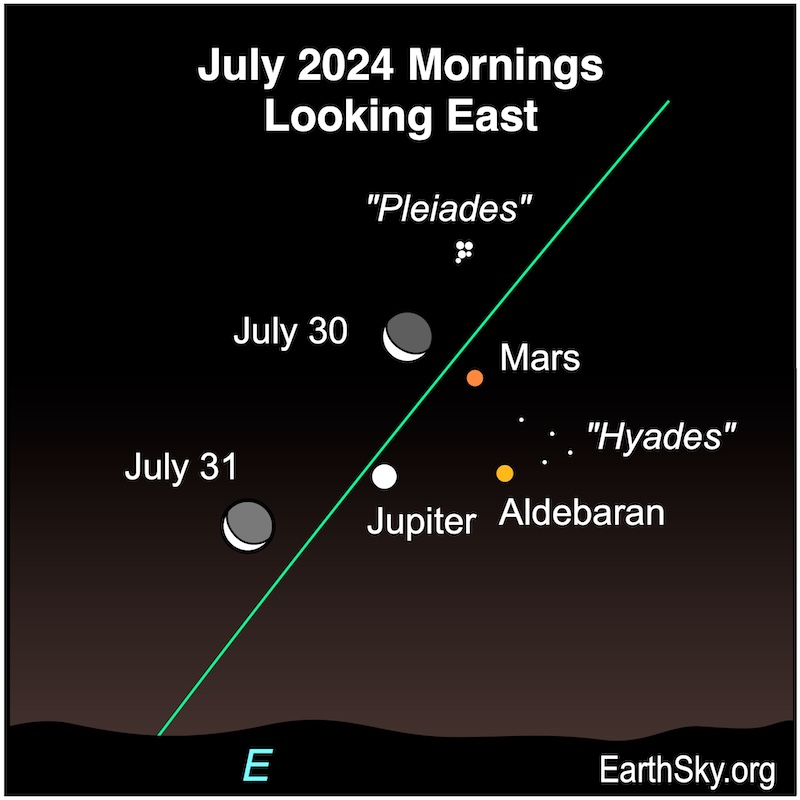
An attractive scene plays out on the last two mornings of July. First, on July 30, the crescent moon floats among bright Jupiter, red Mars, the bright star Aldebaran, and the pretty Pleiades star cluster. They’re all in the eastern sky two hours before sunrise. Then, next morning the moon, as an even thinner crescent, hangs below the celestial grouping.
August 12: The Perseus meteor shower peaks

After 11 p.m. local time on August 11, begin looking toward the northeast for streaking meteors from the Perseid meteor shower. You can watch for meteors through dawn on the morning of August 12. Since the moon sets near midnight, its light interferes little with spotting meteors, which may number up to 50 per hour, perhaps more. They appear to emanate from the constellation Perseus, which is near the more familiar W–shaped constellation Cassiopeia. To be sure, the Perseids likely will be 2024’s best meteor shower.
August 14: Conjunction between red Mars and bright Jupiter

From mid-July through mid-August, red Mars will slowly approach bright Jupiter in Taurus the Bull. Then, on the morning of August 14, Mars will be less than the width of a full moon from Jupiter.

Late August mornings: 6 planets before sunrise
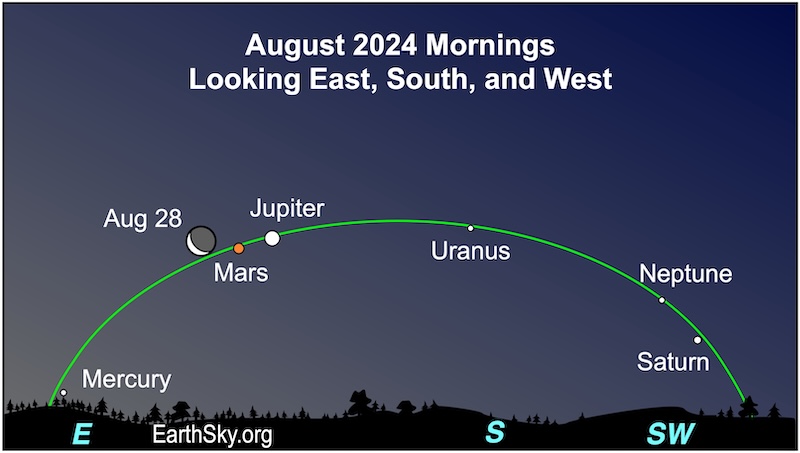
By this time, you’ve probably already seen Jupiter and Mars in the morning sky, coming off their conjunction in mid-August. You’ve probably spotted Saturn, too, farther to the west. But in late August, there are six planets in the morning sky. Can you challenge yourself to spot them all? Mercury will be rising before the sun. The later in the month you look, the better your chance to see it, creeping up from the eastern horizon. Uranus and Neptune will require optical aid and finder charts. Uranus is currently in Taurus while Neptune is in Pisces. You can use Stellarium to help track them down.
October 5, November 4 and December 4: The crescent moon meets Venus
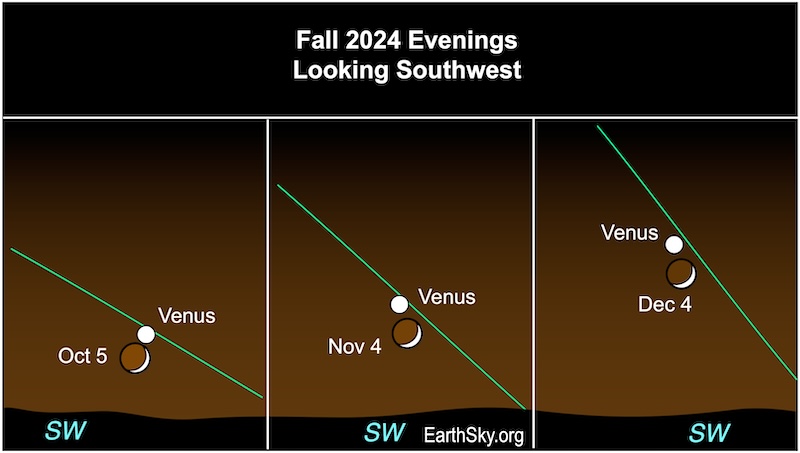
Some of the most eye-catching sky sights happen when a crescent moon appears near the brightest planet, Venus. Indeed, three such occasions occur in fall’s evening sky. As the twilight sky deepens after sunset on October 5, November 4 and December 4, look toward the western horizon for a dramatic scene. Venus will be unmistakable shining next to the waxing crescent moon.
October 14 to 24: Comet Tsuchinshan–ATLAS at its brightest
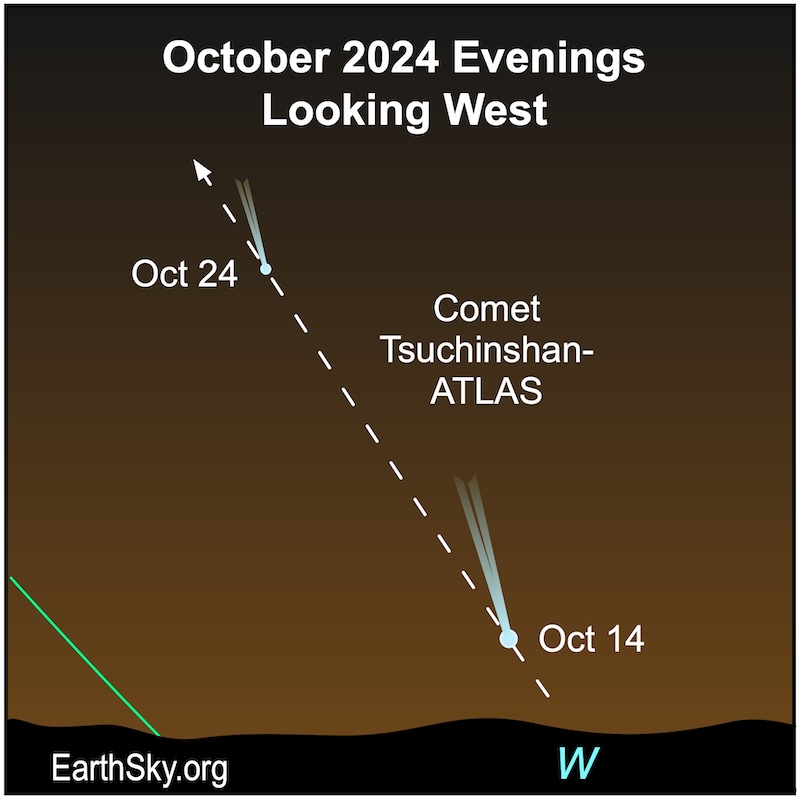
A beautiful, graceful cometary apparition might be in store for us. It’s been a while since we’ve had a wispy comet tail stretch across our evening sky. This October, in particular October 14 through 24, Comet Tsuchinshan–ATLAS could be bright in the early evening sky. With ten months to go, all looks good for a great showing.
November 12: Venus shines near a mysterious glow
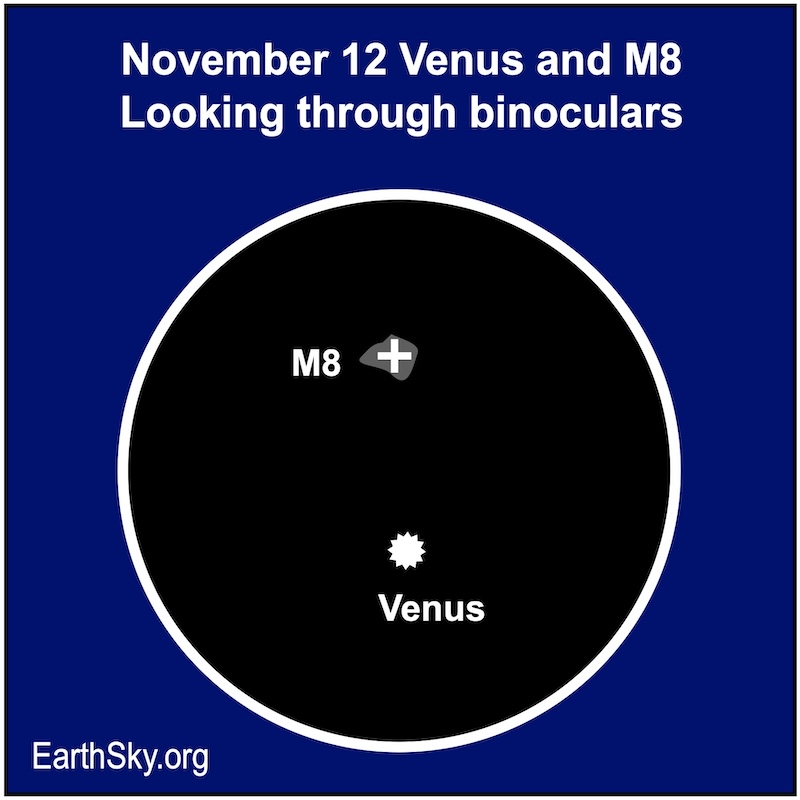
Brilliant Venus will shine low above the southwestern horizon on November 12 about an hour after sunset. And, just above it lies the mysterious star-forming nebula, M8, or the Lagoon Nebula. Center Venus in binoculars and the indistinct glow of M8 will become apparent.
December 5: Mars meets stellar bees
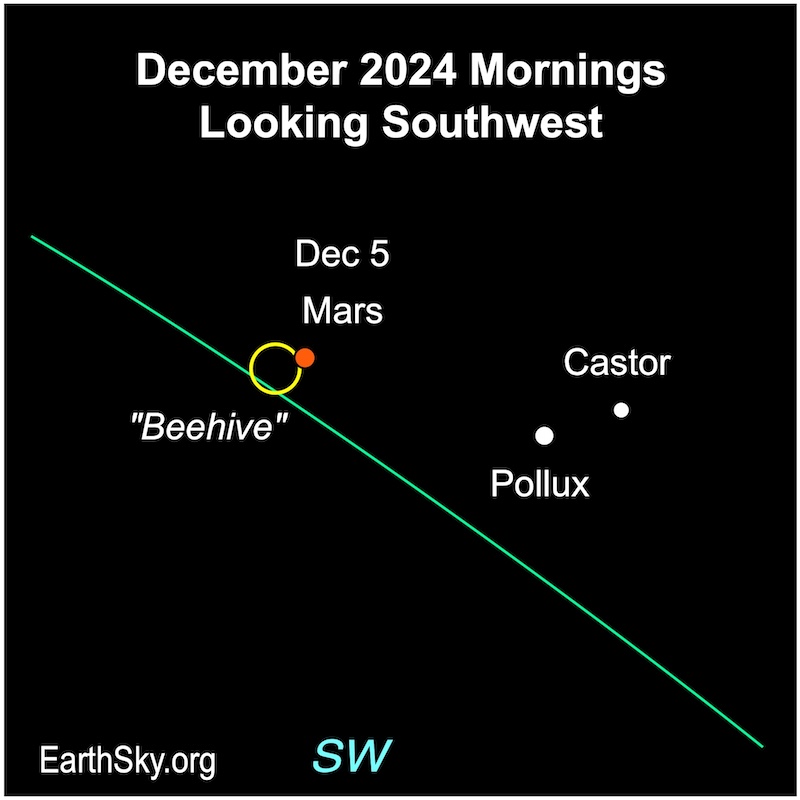
Mars visits the stellar bees of the Beehive star cluster in Cancer on December 5. Look northeast around 11 p.m. your local time for the red planet. Directly next to it will be the dim glow of the cluster. Use binoculars to see Mars standing over the many glittering stars of the Beehive.
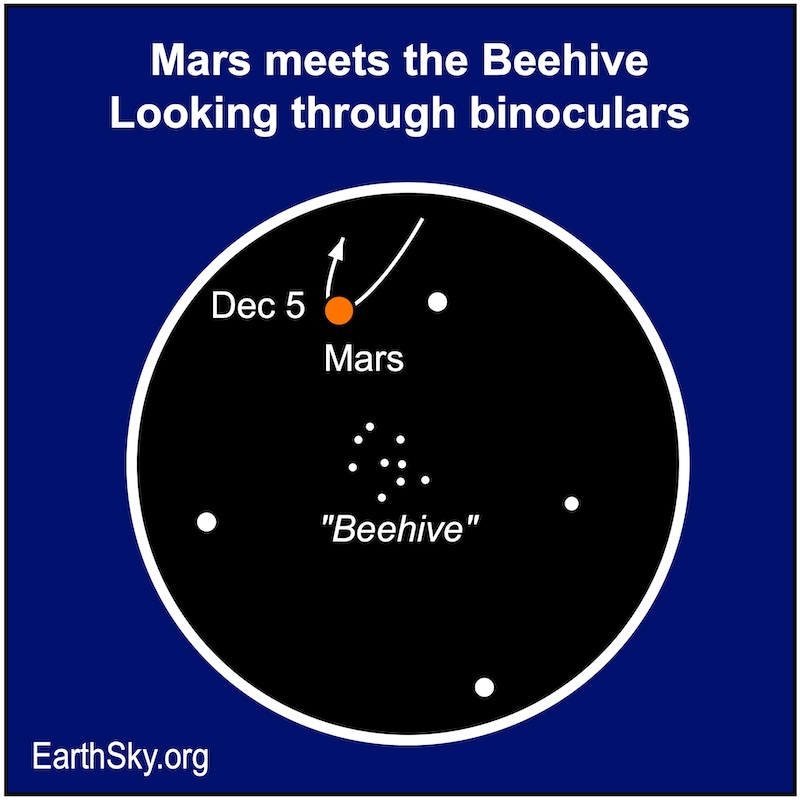
Bottom line: Check out the best sky scenes of 2024! A total solar eclipse crosses North America, planets have close pairings, a comet may shine bright and more!











